Anderson Varejao, Cleveland Cavaliers
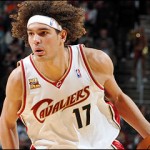 Over the past three seasons, Anderson Varejao has played a grand total of 81 games. The last time he played a full season, in 2009-2010, he made the NBA All-Defense 2nd team.
Over the past three seasons, Anderson Varejao has played a grand total of 81 games. The last time he played a full season, in 2009-2010, he made the NBA All-Defense 2nd team.
In the 25 games Varejao played before suffering a season-ending knee injury compounded by a January blood clot, he led the league in rebounds per game (14.4) and was on pace to reach career high in rebounds, points, steals, assists, offensive rating and PER.
Varejao is an All-Star caliber player, but he always seems to be derailed by injury. He’ll make $9.1 million this coming season, and Cleveland has a team option for $9.8 million next summer. The Cavs didn’t draft Anthony Bennett and Tristan Thompson for nothing; it’s about the future, but it’s also shows a lack of trust in Varejao’s ability to stay on the floor. His career trajectory is at a crossroads. Will Varejao finally put a full season together in his age 26 season?
Andrew Bynum, Cleveland Cavaliers
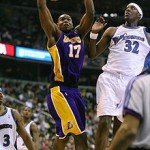 In the much-ballyhooed trade that sent Dwight Howard to the Lakers last summer, Philadelphia sent Andre Iguodala to Denver for the last year of Andrew Bynum’s contract with the opportunity to lock up a franchise cornerstone long term.
In the much-ballyhooed trade that sent Dwight Howard to the Lakers last summer, Philadelphia sent Andre Iguodala to Denver for the last year of Andrew Bynum’s contract with the opportunity to lock up a franchise cornerstone long term.
We all now know that Bynum didn’t play a single game for the Sixers and that he netted an incentive-laden deal with Cleveland that will only guarantee him $6 million this coming season. But what could Bynum guarantee a Cavs team looking to make the playoffs in 2013?
He’s a career 56.6 percent shooting with 11.7 points and 7.8 boards per game, but what does the 25-year-old have left as he looks to renew his value?
(RELATED: FIVE THINGS TO WATCH FOR: CLEVELAND CAVALIERS)
Bynum’s last NBA game was over 15 months ago. He’ll have to prove that he can still play at a high level. If he can and Varejao are still playing in March and April, the Cavaliers are going to be one dangerous club.
Rodney Stuckey, Detroit Pistons
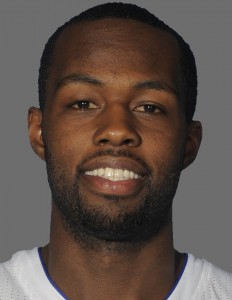 Rodney Stuckey, believe it or not, has played six seasons in the NBA. Last season was the first campaign since his rookie season that he did not start the majority of Detroit’s games. With Brandon Jennings now in the fold and Will Bynum returning, Stuckey will probably play a similar role for the team this season.
Rodney Stuckey, believe it or not, has played six seasons in the NBA. Last season was the first campaign since his rookie season that he did not start the majority of Detroit’s games. With Brandon Jennings now in the fold and Will Bynum returning, Stuckey will probably play a similar role for the team this season.
There’s no other way to put this: Stuckey is an overpaid player in decline. (CHECK OUT DETROIT’S CAP SITUATION HERE)
| Stuckey | Min | FGA | FG % | 3 FG% | Pts | Ast | PER | O Rtg | D Rtg | WS | WS/48 |
| 2009-2010 | 34.2 | 15.2 | 40.5 | 22.8 | 16.6 | 4.8 | 15.6 | 103 | 112 | 2.7 | 0.052 |
| 2010-2011 | 31.2 | 11.8 | 43.9 | 28.9 | 15.5 | 5.2 | 18.4 | 112 | 114 | 5 | 0.111 |
| 2011-2012 | 29.9 | 10.9 | 42.9 | 31.7 | 14.8 | 3.8 | 17.6 | 112 | 109 | 4.5 | 0.131 |
| 2012-2013 | 28.6 | 9.8 | 40.6 | 30.2 | 11.5 | 3.6 | 13 | 103 | 111 | 2.5 | 0.055 |
Stuckey’s minutes per game, points per game and field goal attempts per contest were down for the fourth straight season. His field goal percentage decreased for a third straight year. His PER is sliding, his game from beyond the arc is practically non-existent and he’s proven to be a pretty poor defender based on Defensive Rating.
Stuckey is on the last year of his contract, paying out $8.5 million, which is more than what Jennings will make this coming season. Assuming Joe Dumars is a rational general manager, Stuckey will not be back unless his pay is significantly slashed starting next summer. So this is the year Stuckey needs to awake from his basketball doldrums and become a player of greater value than he’s shown over the last few years.
Andrew Bogut, Golden State Warriors
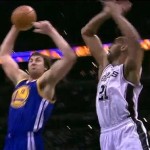 Thanks to some generous folks in Milwaukee, Andrew Bogut is the highest paid player on a very talented Golden State squad. Bogut’s knees held him to 32 regular season games last season, but the Warriors won 21 of those and Golden State was 6-4 in the playoffs when he played more than 20 minutes.
Thanks to some generous folks in Milwaukee, Andrew Bogut is the highest paid player on a very talented Golden State squad. Bogut’s knees held him to 32 regular season games last season, but the Warriors won 21 of those and Golden State was 6-4 in the playoffs when he played more than 20 minutes.
A relatively healthy Bogut averaged more than seven points and just under 11 rebounds per game during the playoffs while shooting 58.2 percent from the field. His postseason PER was a healthy 16.1 and his 100 Defensive Rating was excellent. There’s no doubt that Golden State has the personnel to be a top-four team in the Western Conference.
But they’ll need Bogut to anchor the middle defensively, and Bogut wants another nice contract after his current one expires after the 2013-2014 season.
Warriors head coach Mark Jackson will probably limit Bogut’s minutes during the regular season to preserve him for the playoffs, but when Bogut plays he’ll know it’s for his future in the NBA.
Danny Granger, Indiana Pacers
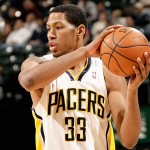 Danny Granger is 30 years old and the 2013-2014 season will define the rest of his career. He only managed to play five games last season and he was clearly a shell of his former self in those contests. This year he looks to come back fresh and determined, ready to prove that he’s still capable of playing an important role for some NBA team going forward.
Danny Granger is 30 years old and the 2013-2014 season will define the rest of his career. He only managed to play five games last season and he was clearly a shell of his former self in those contests. This year he looks to come back fresh and determined, ready to prove that he’s still capable of playing an important role for some NBA team going forward.
The problem? The role Granger will play with the Pacers, who did so well last season in his absence, is still very much up in the air. The front line of Roy Hibbert, David West and Paul George is the best in the NBA, and George Hill flourished defensively as the starting point guard. That leaves Granger in competition with Lance Stephenson (more on him in a moment) for the starting two-guard spot and the meaningful minutes that will come with it.
Granger averaged 17 points per game in the 11 games Indiana played during the 2011-2012 playoffs, and he was a borderline all-star when healthy. He needs to get back to that level if he wants to be a top-three player on a team in the future.
Lance Stephenson, Indiana Pacers
It can be easily argued that Stephenson was the greatest beneficiary of Granger’s injury. After two below average NBA seasons, the 22-year-old started 72 of the 78 regular seasons he played in and emerged as an efficient player on both ends.
When looking at the difference between his second and third seasons, calling his improvement a quantum leap would be a gross understatement.
| Stephenson | Min | FG % | Pts | Reb | PER | O Rtg | D Rtg | WS | WS/48 |
| 2011-2012 | 10.5 | 37.6 | 2.5 | 1.3 | 7 | 80 | 104 | -0.3 | -0.031 |
| 2012-2013 | 29.2 | 46 | 8.8 | 3.9 | 11.8 | 106 | 101 | 5.5 | 0.115 |
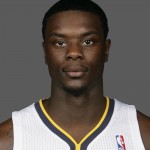 Stephenson was a negative value player in season two, and became a very strong, tenacious defensive asset last season.
Stephenson was a negative value player in season two, and became a very strong, tenacious defensive asset last season.
That tenacity carried over into the postseason, where he averaged 9.6 points and 7.7 rebounds in an increased role in which he averaged 35.4 minutes played in the Pacers’ 19 postseason contests.
While he’ll make over $13 million less than Granger this coming season, Stephenson carries a lot of momentum and a very valid case that he should be the starter at shooting guard.
With both competing for minutes in contract years, it could be the most compelling training camp position battle in the league.
THURSDAY: PART 2
Shlomo Sprung loves advanced statistics and the way they explain what happens on the court. He is also the web editor of the Brooklyn Daily Eagle. A 2011 graduate of Columbia University’s Journalism School, he has previously worked for the New York Knicks, The Sporting News, Business Insider and other publications. His website is SprungOnSports.com. You can follow him on Twitter.